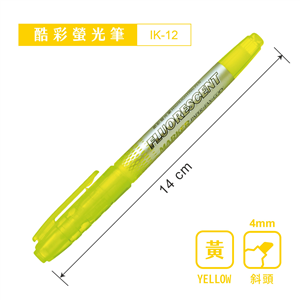 1收藏
1收藏

 二手徵求有驚喜
二手徵求有驚喜
定價:NT$ 1100
優惠價: 9 折, NT$ 990
限量商品已售完




The primary purpose of this work is to undertake a comparative phonological reconstruction for the G�dialects. To this end the traditional comparative method is applied, and the reconstructed common or proto-system that results, called Common G� The reconstruction is multi-layered, in that parallel competing forms in the compared cognate sets are used to posit different lexical strata in the system. The first chapter provides a general introduction to the G�dialect family and discusses the specific lects to be compared. Reconstructive methodology is outlined with special reference to problems in the comparative reconstruction of multi-stratal Chinese dialects. The second, third, and fourth chapters deal with the reconstruction of syllable initials, finals, and tones respectively. The fifth chapter is an experimental exercise, in which 78 full lexical forms, many of which are polysyllabic rather than monosyllabic, are compared as an illustration of how a comprehensive etymological lexicon of G�might someday be compiled.
The final chapter addresses a number of different questions connected with the general field of comparative G� First, the demographic and migration history of the G�speaking area is summarized. Then the lexical layers identified in earlier chapters are seriated and correlated with major demographic and migration-historical events. After this, a special section is devoted to distinguishing G�from contiguous dialect families. And, finally, all these historical and taxonomic points are brought to bear on the question of subgrouping within G� Particular note is taken of the striking similarities between reconstructed Common G�phonology and Jerry Norman's Common Dialectal Chinese system. It is then suggested that the core lexical stratum of Common G�may have developed as a result of colonial leveling, when immigrants from different parts of North China congregated in the G�River drainage basin during the medieval period.
The full corpus of 1,077 cognate sets used in the reconstruction is given in an Appendix, and a short index to the entire work is provided at the end of the work.
退換貨說明:
會員均享有10天的商品猶豫期(含例假日)。若您欲辦理退換貨,請於取得該商品10日內寄回。
辦理退換貨時,請保持商品全新狀態與完整包裝(商品本身、贈品、贈票、附件、內外包裝、保證書、隨貨文件等)一併寄回。若退回商品無法回復原狀者,可能影響退換貨權利之行使或須負擔部分費用。
訂購本商品前請務必詳閱退換貨原則。 1收藏
1收藏

 二手徵求有驚喜
二手徵求有驚喜
優惠價: 9 折, NT$ 990 NT$ 1100
限量商品已售完
The primary purpose of this work is to undertake a comparative phonological reconstruction for the G�dialects. To this end the traditional comparative method is applied, and the reconstructed common or proto-system that results, called Common G� The reconstruction is multi-layered, in that parallel competing forms in the compared cognate sets are used to posit different lexical strata in the system. The first chapter provides a general introduction to the G�dialect family and discusses the specific lects to be compared. Reconstructive methodology is outlined with special reference to problems in the comparative reconstruction of multi-stratal Chinese dialects. The second, third, and fourth chapters deal with the reconstruction of syllable initials, finals, and tones respectively. The fifth chapter is an experimental exercise, in which 78 full lexical forms, many of which are polysyllabic rather than monosyllabic, are compared as an illustration of how a comprehensive etymological lexicon of G�might someday be compiled.
The final chapter addresses a number of different questions connected with the general field of comparative G� First, the demographic and migration history of the G�speaking area is summarized. Then the lexical layers identified in earlier chapters are seriated and correlated with major demographic and migration-historical events. After this, a special section is devoted to distinguishing G�from contiguous dialect families. And, finally, all these historical and taxonomic points are brought to bear on the question of subgrouping within G� Particular note is taken of the striking similarities between reconstructed Common G�phonology and Jerry Norman's Common Dialectal Chinese system. It is then suggested that the core lexical stratum of Common G�may have developed as a result of colonial leveling, when immigrants from different parts of North China congregated in the G�River drainage basin during the medieval period.
The full corpus of 1,077 cognate sets used in the reconstruction is given in an Appendix, and a short index to the entire work is provided at the end of the work.
退換貨說明:
會員均享有10天的商品猶豫期(含例假日)。若您欲辦理退換貨,請於取得該商品10日內寄回。
辦理退換貨時,請保持商品全新狀態與完整包裝(商品本身、贈品、贈票、附件、內外包裝、保證書、隨貨文件等)一併寄回。若退回商品無法回復原狀者,可能影響退換貨權利之行使或須負擔部分費用。
訂購本商品前請務必詳閱退換貨原則。
※ 二手徵求後,有綁定line通知的讀者,
該二手書結帳減5元。(減5元可累加)
請在手機上開啟Line應用程式,點選搜尋欄位旁的掃描圖示
即可掃描此ORcode
|
||||||||||||||||||
|
||||||||||||||||||
|
||||||||||||||||||













